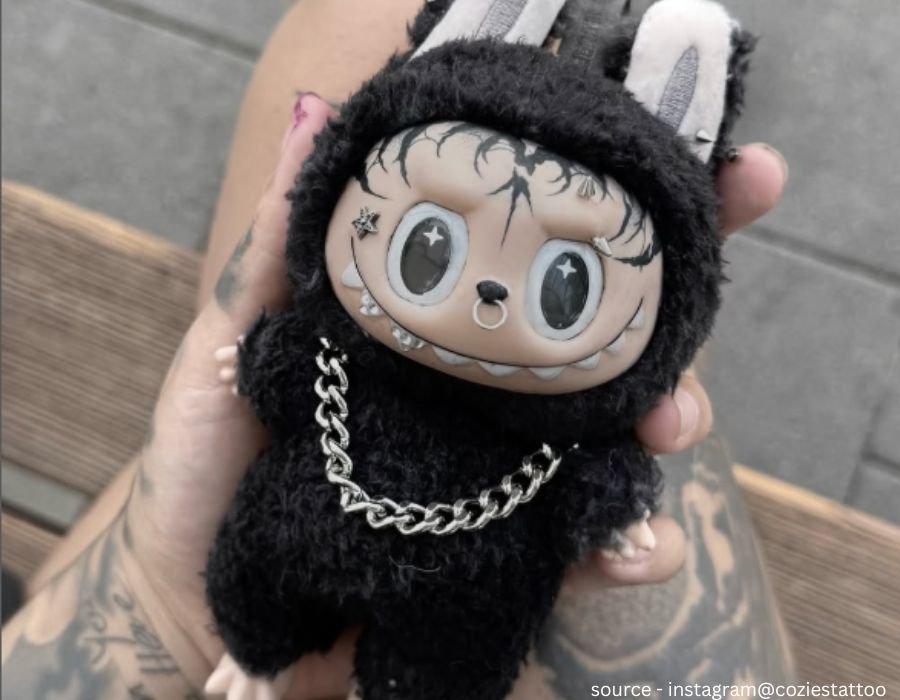There is a growing obsession with viral collectable items. Right off the bat, we think of Labubu dolls that stand as a powerful reflection of how social media trends shape our society. Upon looking at the psychological mechanisms behind it, one understands a lot goes behind consumer behaviour guided by social media. Users are greatly influenced by digital environments, social pressures, and cognitive shortcuts. This phenomenon helps us understand modern consumer behaviour and the psychological forces that promote participation in such trends across the internet (Anderson, I. A. & Wood, W., 2020).
Habitual Use and Platform Design
Social media platforms encourage frequent engagement, which, over time, leads to habitual automaticity. Users begin to act without any actual intention, responding to dopamine-driven feedback loops. When trends emerge, users already part of daily platform routines are more likely to adopt them. For users, this seamless blend of new content is habitual, which allows effortless engagement (Anderson, I. A. & Wood, W., 2020).
Social Conformity and Celebrity Influence
One of the strongest psychological drivers of the craze over the Labubu dolls or similar trends, is social conformity. The internet is a huge melting pot of celebrities and influencers who regularly showcase their collectibles. Their endorsement elevates the item’s perceived value and users think them to be culturally relevant, often following these cues to gain social acceptance.
This behaviour is reinforced by both normative influence (wanting to be accepted) and informational influence (looking to others for correct behaviour). When everyone seems to be participating in a trend, users are more likely to join in even if it differs from their interests or there is a lack of awareness of the product’s deeper significance (Chen, Y. & Zhuang, J., 2024).
The Fear of Missing Out (FoMO)
The fear of missing out is an emotional motivator in social media behaviour. As trends roll in faster than a week goes by, most people rush to buy the latest merchandise or post related content to avoid feeling excluded from conversations or social circles. The popularity of Labubus, combined with their limited releases, creates a sense of urgency and unforeseeable demand for acquiring these dolls, sometimes in bulk.
This emotional state of “Fear of Missing Out” gets magnified by real-time feedback on platforms. Likes, comments, and shares act as rewards, encouraging impulsive decisions. For a lot of people, participating in a trend mostly centres around the fear of social invisibility (Hein, M., 2022).

Emotional Appeal and the “Aww” Factor
Labubu dolls are designed to be appealing. The large eyes, soft and round features, and childlike appearance evoke affection. This emotional appeal encourages emotional bonding, making the dolls comforting companions for most. These dolls strike a chord of nostalgia, stress relief, or even emotional support. This kind of emotional attachment makes disengagement from the trend more difficult (Thaewpattha, N., 2023).
Identity, Belonging, and Community Validation
Once acquired, Labubu dolls become more than just toys or bag charms; they are identity markers. Sharing the proof of owning them on social media platforms, allows users to participate in a larger community of collectors hence boosting validation, recognition, and a sense of belonging. Users gain social capital by demonstrating quirks such as rare finds or unique customizations. Trend participation becomes an indicator of in-group membership (Krämer, N., Walther, J., 2016).
Labubu dolls offer options for personalization, despite their mass production. Custom outfits, accessories, and painted features allow consumers to express individuality with each piece they purchase. This customization creates an illusion of uniqueness. The digital world ironically emphasizes individuality which often feels compromised by conformity. The ability to customise collectables offers a satisfactory blend of creativity and community alignment (Krämer, N., Walther, J., 2016).

Consumerism, Scarcity, and Obsolescence
The commercial strategies behind the production of Labubu also drive obsession. Heightened demand meets with “limited-editions” or “rare drops” fuelling consumer behaviour. Market shelves get cleared out instantaneously with people running after the thrill of owning a “scarce” object. This further ensures ongoing demand and further complexities such as creation and rejection of counterfeit versions of the same product (Thaewpattha, N., 2023).
Platform Architecture and Algorithmic Amplification
Social media platforms are engineered in a way that they amplify trending content. Algorithms prioritize posts with high engagement, ensuring that once trends similar to Labubu dolls become popular, they dominate the feeds of a large audience. Thus, exposure bias, reinforced by the availability heuristic, makes the trend feel even more common than it is.
Conclusion
The Labubu doll phenomenon illustrates how social media trends thrive on a mix of social pressure, emotional rewards, and cognitive biases. From platform design to psychological needs and cultural storytelling, every aspect of the digital ecosystem works together to accelerate the spread of these trends. As a result, they catch on like wildfire, moving swiftly across individuals, communities, and even countries.
Understanding these forces helps decode the popularity of Labubu dolls as well as the broader mechanisms behind trend-setting and viral consumerism. In an age where identity and community belonging are strongly tied to valid digital behaviours, trends like these reveal the psychological shaping of our online lives. They take up a significant space in how we interact with those around us and engage on the internet daily.
FAQs
1. What are Labubu dolls?
Labubu dolls are collectable designer toys known for their cute features and emotional appeal, popularised through social media.
2. Why are people obsessed with them?
Their design, rarity, and trend status make them emotionally appealing and socially desirable, especially online.
3. How does social media fuel this trend?
Influencers, algorithms, and real-time feedback (likes, comments) push trends into the spotlight, encouraging more people to join in.
4. Why do people feel pressured to join trends like Labubu dolls on social media?
Social conformity, fear of missing out (FoMO), and habit all play a role. People want to fit in, fear being left out, and often engage with trends automatically due to repeated exposure and platform design.
5. What makes people emotionally attached to collectables like Labubu dolls?
Their cute, childlike features trigger instinctive affection, and customizing them helps people express their identity. This emotional connection makes the trend feel personal, not just popular.
References +
- Anderson, I. A., & Wood, W. (2020). Habits and the electronic herd: The psychology behind social media’s successes and failures. Consumer Psychology Review, 4(1), 83–99. https://doi.org/10.1002/arcp.1063
- Chen, Y., & Zhuang, J. (2024). Trend conformity behavior of luxury fashion products for Chinese consumers in the social media age: Drivers and underlying mechanisms. Behavioral Sciences, 14(7), 521. https://doi.org/10.3390/bs14070521
- Hein, M. (2022). Social Influencers: FOMO and Identity Crisis. Character and Crisis, Volume 8. https://www.dbq.edu/media/Wendt/Characterand/08-Crisis.pdf#page=65
- Krämer, N., Walther, J. (2016). Monitoring and Expressing Opinions on Social Networking Sites– Empirical Investigations based on the Spiral of Silence Theory. https://core.ac.uk/download/pdf/79431131.pdf
- Thaewpattha, N. (2023). Curatorial Project for Art Exhibition: “BOOTLEG SHOW” by MRKREME. Chula Digital Collection. https://digital.car.chula.ac.th/cgi/viewcontent.cgi?article=13459&context=chulaetd













Leave feedback about this